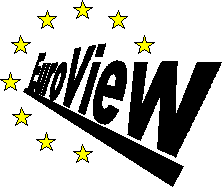
At an early stage determine whether or not the directory will be available for external access. If external use is deemed a requirement, the next step is to decide whether any information intended for staff use is sensitive and should be excluded from public access. It may be appropriate to define a public view containing the list of official contacts, and a private view encompassing the entire database. At this point security policy will also have to come into consideration. You should aim to keep policy as simple as possible because implementing and maintaining a complex set of rules can add significantly to the overhead. The assignment of access rights to internal (private) and external (public) users on a per-entry basis is relatively straightforward. There is more overhead attached if access controls are to be applied on a per-attribute basis. An example of this would be to hide the telephone of certain people within the organization, whilst allowing their e-mail addresses to be visible. Complex security policies can be based on the notion of select directory communities. This might be a set of organizations that co-operate closely with you. However, once you enter into this territory you?ll encounter policy problems such as how communities are defined (the question of who is trusted and should be within a community is not always simple) and technical problems, such as the need for secure methods of authentication between community members. Access controls are generally applied within the directory server, i.e. access information is held in the directory database. This approach requires the use of encrypted authentication techniques in order to be truly meaningful. However, recent developments allow the flow of directory data to be limited using firewall software. These directory proxy servers act as an access filter and prevent sensitive data leaving your local network.
Consider how people will use the directory to find the information they want. Will users simply want to find contact information by looking up personal names If the service is to be valuable to the citizen then contacts must also be available by looking up service names and descriptions. If the services provided have international scope then language translations of service descriptions could be useful. Go on to think of specific functions that you want the directory to perform. In general the basic role of the directory is to provide a White Pages service by publishing the contact information of organizational staff. A directory of services is the next step. Other functions are possible. A simple expansion of the directory database utilises the directory entries of people to manage electronic distribution lists. Usefulness is not limited to the support of network services. The directory information model is extensible, and so the database can be used to store data of local interest. Examples are user identifiers, payroll information and organizational data such as job titles. The flexibility of the directory is an advantage but can also be a pitfall, as there may be a temptation to over specify the requirements. Functionality that is difficult to implement might hinder progress. Be careful to identify functions that are practically achievable within limits of time and resource. Those that are not can be left to a later date.
The way users access the service will determine the success of the project. If users are not given appropriate tools for accessing the directory, then the service wont be used! It is thus important to find clients that are user friendly, practical and efficient. Key access methods can be identified early on by looking at the various ways people access information services now. The World Wide Web is an obvious candidate for service delivery, and this can be provided through use of a directory to Web gateway. The advantages a Web gateway has is that little or no software roll out is required, as most desktop computers will already have a browser installed. In addition gateway access means that the directory service can be integrated into the organizations Web site, and so be utilized as a means of service provision to clients and citizens. Though Web access is useful, the telling factor for local staff will be how well the directory is integrated with existing applications. Integration with the e-mail interface is of primary importance. This is closely followed by word processors and other office applications. More advanced use of the directory can be made by group calendar and address book applications. System integration is the next step. The data that the directory provides can be used as the basis for a number of applications. The directory is best thought of as an information resource that can be used to support existing and future applications. As an example, the database can be used to manage a document hierarchy or a World Wide Web page index. White Pages information can be used to manage further communications services, such as video conferencing. For video conferencing, personal entries can be used to point location services to where a user is logged in, and hence reachable from. Thinking about the applications that the directory could support in the future is a good idea your organization will help you to anticipate future changes and therefore help you plan better.